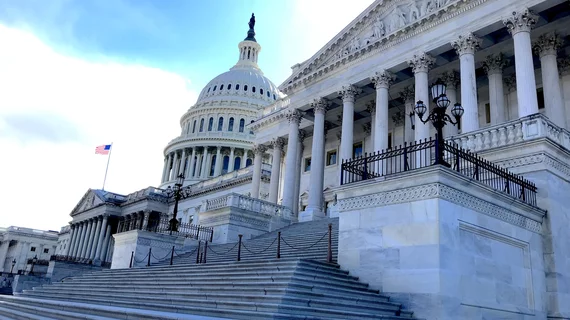Independent radiology champion to Congress: ‘We are in serious danger of losing local healthcare focus’
Hospitals are rich and poised to get richer while independent physicians and groups continue to take it on the chin, facing ever more onerous pressures to consolidate under the headship of large hospitals, health systems or for-profit practice management companies.
This trend is to the detriment of all of U.S. healthcare—and if it’s not reversed, the flaws of the lopsided delivery model will be most acutely felt by patients.
So warns RBMA’s Radiology Patient Action Network (RPAN) in a message to Congress shared with the press Nov. 4.
The advocacy group’s plea for reconsideration comes as a response to CMS’s Nov. 1 publication of 2023 final rules for the Medicare Physician Fee Schedule and (MPFS) and Hospital Outpatient Prospective Payment System (HOPPS).
“While independent and non-hospital based providers across the country now face significant cuts, hospitals will receive increased reimbursements of over $6 billion dollars,” RPAN states, adding that Medicare is already paying hospitals around 60% more than it pays independent doctors.
The widening reimbursement gap, the group adds, “will only lead to more consolidation among healthcare providers, compounding inequities between hospital-based and non-hospital based providers” and “limiting patient access to care.”
Relief Bill Has Momentum But Maybe Not Much Time
RPAN points federal legislators to a House bill submitted in September by Rep. Ami Bera (D-CA). Dubbed the “Supporting Medicare Providers Act of 2022,” the bill, HR 8800, has won broad bipartisan support.
The bill reads, in part:
It is the sense of Congress that the Secretary of Health and Human Services, the House of Representatives, and the Senate should commit to take administrative and legislative actions to 1.) ensure financial stability and predictability in the Medicare physician payment system; 2.) promote and reward value-based care innovation; and 3.) safeguard timely access to high-quality care by advancing health equity and reducing disparities.”
RPAN’s message urges Congress to pass the bill “on behalf of providers and patients across the country as swiftly as possible to begin systematic Medicare reform, including an inflationary adjustment for MPFS.”
Congress Implored to Halt ‘Devastating Cuts to Independent Medicare Doctors and Their Patients’
In the Nov. 4 RPAN message, RBMA Executive Director Bob Still ties the group’s appeal to a recent RPAN survey showing almost half of U.S. women covered by or eligible for Medicare have not been screened for breast cancer for at least three years.
In light of this statistic, Still says, “Congress cannot justify cutting Medicare reimbursements to doctors, especially those who conduct the screenings and procedures that help prevent deadly breast cancer and other illnesses.”
The pay cuts CMS is planning for radiologists and other clinicians via the 2023 MPFS and HOPPS final rules take “an axe to preventative healthcare for women on Medicare and … will lead to the slashing of Medicaid coverage, since most states index their Medicaid rates based on Medicare.”
Taken together, the Medicare and Medicaid reimbursement reductions at hand “will worsen health inequity across America,” Still says. “Congress must stop these double-digit, devastating cuts to independent Medicare doctors and their patients to ensure all Americans receive affordable, quality healthcare.”
‘This Payment Structure Really Needs Systemic Reform’
Asked by Radiology Business to expound on outpatient reimbursement in 2023, Still answered that CMS “really gave a gift” to hospitals.
When the agency proposed a 2023 rule for HOPPS over the summer, it gave hospitals a 3.1% raise under its market basket adjustment, Still notes.
The final rule of Nov. 1, he points out, ups the hospital increase to 4.1%.
Against that backdrop, Still says, it’s striking that most non-hospital physicians “will take cuts of more than 4%—and total cuts with PAYGO and sequester will be double-digit to doctors in 2023.”
Still adds:
This payment structure really needs systemic reform. With hospitals seeing a $6.5 billion bump in 2023, there is a growing delta between hospitals and physicians which could expand efforts at consolidation of physician groups. We are in serious danger of losing local healthcare focus with these policies.”
2023 MPFS/HOPPS details:

